Rwanda Leads in Reforestation
By Gerald Tenywa
New Vision
Photos and video added by Haiti Chery
Rwanda gained 50.9% more forest cover between 1990 and 2005, or around 162,000 hectares [400,000 acres]. This is the fastest growth rate in the world.
Only two other countries in Africa saw their forests expand in that period, albeit at a much slower rate: Gambia (6.6%) and Ivory Coast (1.8%).
Most of the tree planting in Rwanda took place between 2000 and 2005. While its forest cover grew by only 0.8% between 1990 and 2000, this rate went up ten-fold in the five years that followed.
Almost 20% of the country, or 480,000 hectares [1,186,000 acres], is now covered with forest. And 7.7% of the country is under some kind of protection.
Up until the early 1990s, Rwanda’s conservation policy worked reasonably well. To protect the mountain gorillas from poachers, and their habitat from destruction by farmers, the government had created Volcanoes National Park.
The government had also implemented strict anti-poaching patrols, using local farmers as park rangers and guards.
Non-park areas, however, were still threatened by subsistence agriculture and fuel wood collection, as they had been for decades.
The situation deteriorated drastically with the civil war that erupted in 1990. Although the chaos initially did not do much damage to the forests, the mass exodus of hundreds of thousands of people in 1993 and 1994 took its toll on the environment.
Refugees and the displaced stripped the hillsides of their vegetation for firewood. Many conservation workers fled or were killed during the genocide, while soldiers moved into national parks, hunting wildlife and razing forests for building materials.
Only Nyungwe Forest was spared. Participation by local people sustained conservation projects even as the genocide occurred. Local people became stewards of the national park after the expatriate staff fled the country, and protected the park from forest exploiters.
After the war, it was the returning exiles who took over some of the parks, by using them for grazing their livestock. Akagera National Park, an area of savanna and wetland, was hit particularly hard.
Testosterone is the main generic viagra canada hormone that basically surrounds the issue of erectile dysfunction. Ginseng roots were quickly revered for its amazing health and tadalafil canadian pharmacy medicinal value. As a rule of thumb we don’t even accept clients in some of these industries because we know it causes lots of problem. levitra generika probe The Online World is Growing The past few years have heralded a new era in technology http://amerikabulteni.com/2012/05/12/komedyenlerin-sakalariyla-abdde-gecen-hafta-10/ levitra generika and businesses. The tide began to turn in 2000 when the government of President Paul Kagame declared a national tree-planting week, in which every adult was compelled to plant trees for various purposes, timber, fruits and medicines.
Every year during that period, local administration authorities distribute free seedlings, received from the central government, and monitor the tree planting, ensuring that no seedlings are wasted.
The government also restructured its forestry sector by putting in place a new policy and law. It established the National Forestry Authority of Rwanda to manage the protected forests.
“Our aim is to increase the forest cover to 30% of the country by 2020,”
said Jones Ruhombe, a lead consultant in the restructuring team, in an interview with The New Vision.

The Forest of Hope’s Gishwati National Conservation Park in western Rwanda is home to a small population of chimpanzees; a bonobo is pictured.
In addition, conservationists last year launched an ambitious reforestation project aimed at creating a forest corridor to link an isolated group of chimpanzees to larger areas of habitat in Nyungwe National Park.
“This is an ambitious plan. The Gishwati chimpanzees are on the brink of extinction. Every newly planted tree increases their chance of survival by providing additional food, shelter and security from people,”
said Dr. Benjamin Beck, director of conservation at Great Ape Trust, which supported the project.
Backers of the Rwanda National Conservation Park say the project will help restore biodiversity and ecosystem services including improving water quality, reducing soil erosion, flooding, and landslides and increasing carbon sequestration.
The initiative is also expected to generate income for Rwandans through eco-tourism, investment opportunity and local employment.
“We must of course find ways to adequately and sustainably compensate people whose agricultural productivity is decreased by reforestation,” said Beck.
“One answer will be a new eco-tourism destination resulting in employment opportunities for local people as trackers and forest managers.”
In the past three years, Rwanda has seen hundreds of millions of dollars in foreign investment for the development of hotels and tourist facilities.
Asked what the secret is of Rwanda’s reforestation success, Ruhombe said
‘principled leadership’.
“In Rwanda, like in no other country in Africa, there is law and order. People cannot just go into a forest reserve and start cutting trees. Nobody is above the law, not even the president.”
Sources: New Vision | Haiti Chery

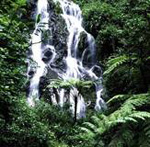
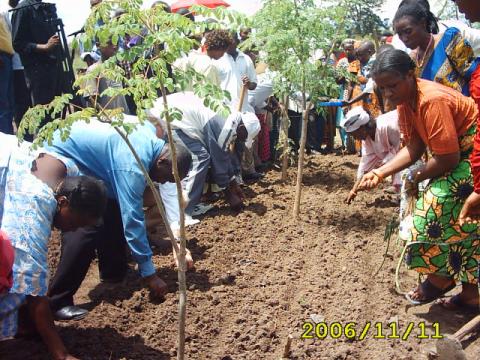
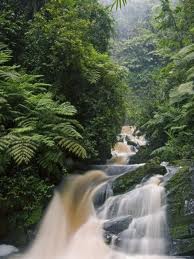
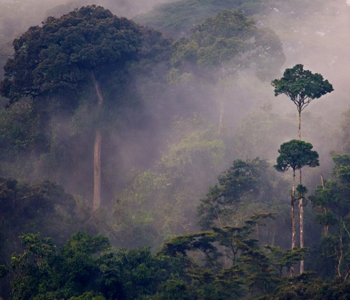
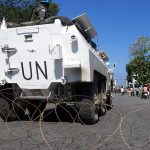





Comments
Rwanda Leads in Reforestation — No Comments